I pitched a budget Decathlon tent in the snow overnight and survived
I took the Forclaz MT500 out in the depths of winter to see how far you can push this budget three-season trekking tent
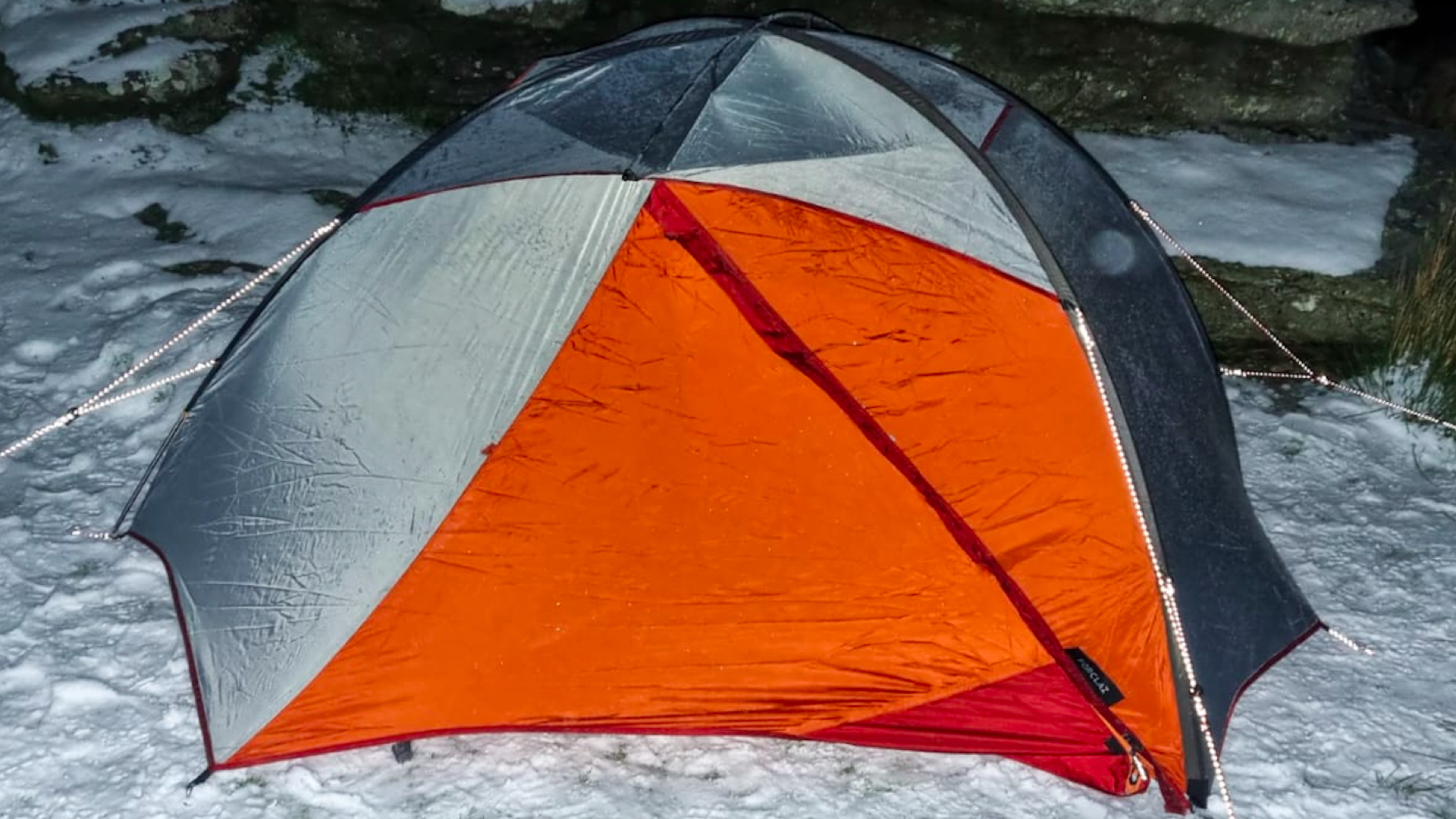
I’ve long been of the opinion that three-season tents are sufficient for the types of winters we get in England and Wales. In my experience, if you pitch them sensibly in areas that aren’t overly exposed, they’ll get you through the season just fine – especially if you don’t intend on camping at elevation. But how much can a three-season tent reasonably put up with?
I’ve recently been on a bit of a journey to find out, especially in regards to budget gear. In November, in fact, I tested Decathlon’s three-season MH100 tent during a bout of particularly rough weather. And after spending a harrowing night at elevation in some exceptionally wet and blustery weather, I can confidently say I found its limits – and then went beyond them.
After that test didn’t go in the tent’s favor, however, Decathlon got in touch and asked if we’d like to try out another tent from their budget range that might just be up to the task – the MT500, a lightweight three-season trekking tent that’s part of the retailer’s more adventure-focussed Forclaz brand. Challenge accepted!
Camping Tent Forclaz MT500: £109.99 at Decathlon
This is the budget three-season, two-person tent we decided to see if it could stretch to that fourth season at Great Links Tour. It’s actually a very capable tent, especially for the price, but we may have pushed it beyond its limits.
The tent
Weighing in just shy of 3kg, the two-person iteration (check out our guide to the best 2-person tents you can buy) of the Forclaz MT500 is a tidy little tent that feels like it was made to tackle bigger adventures than the Quechua MH100. Though not ultralight, it packs down small to a really convenient size and has been very thoughtfully designed. Unlike on the MH100, for example, the MT500’s inner is attached to the fly for quick assembly in bad weather. This prevents any rain falling in when you erect the inner first, and makes it a doddle to put up and pack down. It also comes with a hanging line for wet kit, handy attachment loops for easily adding or removing guy lines and intelligently-designed door zippers that hold the doors in place when opened. And all this for £109.99.

The conditions
In order to put this little three-season tent through its paces, I wanted to pitch somewhere that would be reliably blustery and cold and – if possible – on a night where I could either expect a deluge of rain or, in the best case, tons of snow. Lucky for me, a mid-December cold snap delivered exactly that.
Keeping an eye on the weather forecast, I looked for areas with a similar elevation to my previous test that were expecting a dumping of snow. And as it looked like the south would be getting hit with tons of snow and a fair amount of wind, I decided to head to Dartmoor National Park.
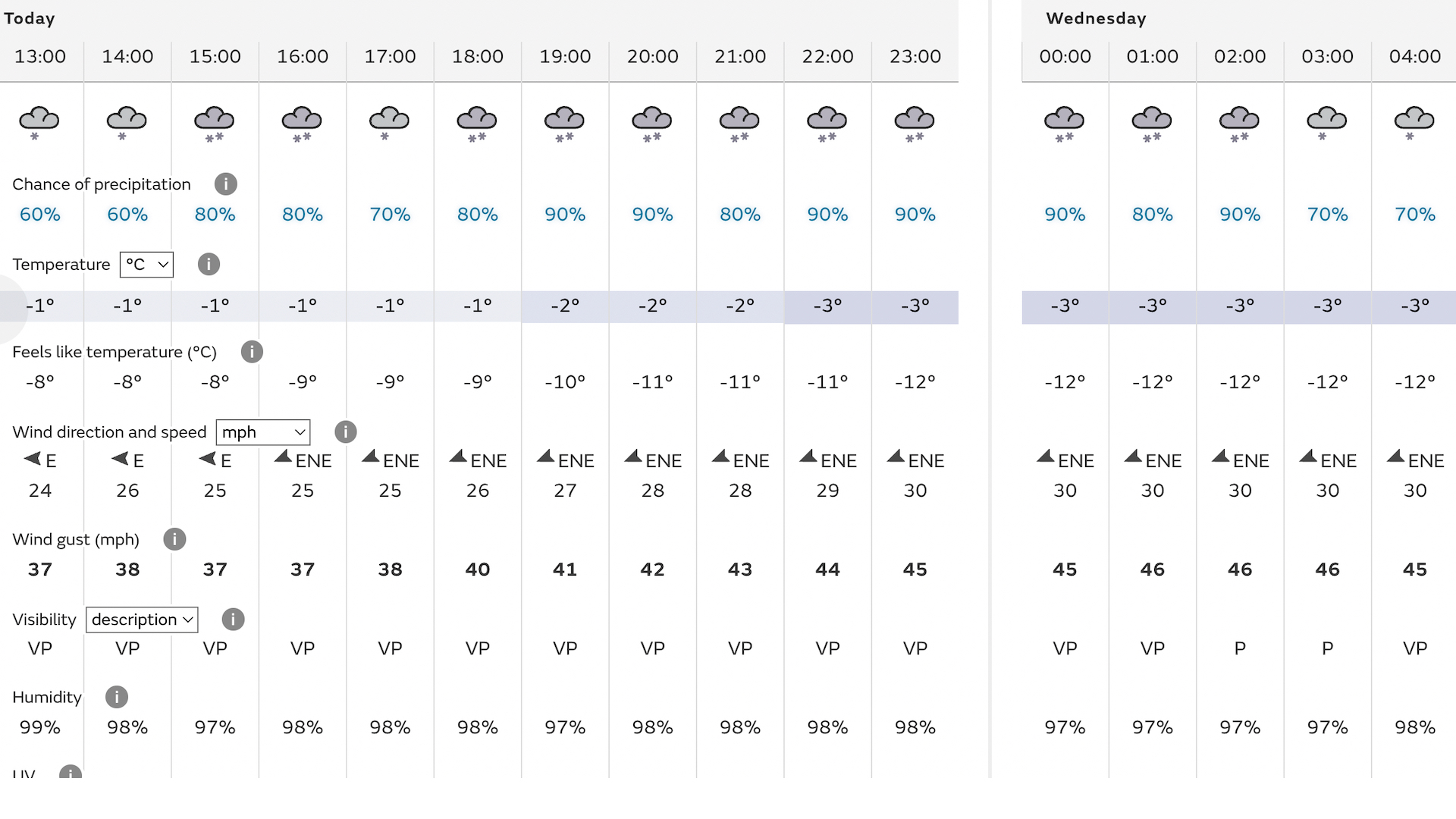
Boasting a similar elevation to Shropshire’s Caer Caradoc (the site of my previous test) as well as offering plenty of flat ground for pitching a tent, I selected Great Links Tor as the site for my mid-December tent test.
All the latest inspiration, tips and guides to help you plan your next Advnture!
A stunning spot I already knew well, it was guaranteed to deliver all of the conditions a three-season tent isn’t built for, while still offering plenty of protection from the wind if I lost my confidence in the MT500 during the night. It was also conveniently situated at the end of a fairly well maintained hiking trail just under an hours’ hike from a car park – giving me an easy exit if I needed to break camp at any time during the test.

The test
When I arrived at the car park shortly after 2pm, the sun was already practically waving goodbye on the horizon. It was mid-December after all, and the days were already at their shortest. Come 4pm, the sun would be well below the surrounding hills, so I stuffed the last bits of kit into my pack and heaved it up onto my back.
As the temperatures were forecast to hit around -3°C (26°F) shortly before midnight – with a 'feels like' temperature of -12°C (10°F) – I was taking everything but the kitchen sink. I had a spare sleeping bag (in case the tent leaked and I needed a backup), a bivy sack (in case the tent blew away), and a silly amount of extra warm layers (in case the tent held in no warmth whatsoever). All in, my kit for one night in a tent pitched about 60 minutes from the car weighed well over 16kg. But at least I was confident I’d be able to get through the night safely.
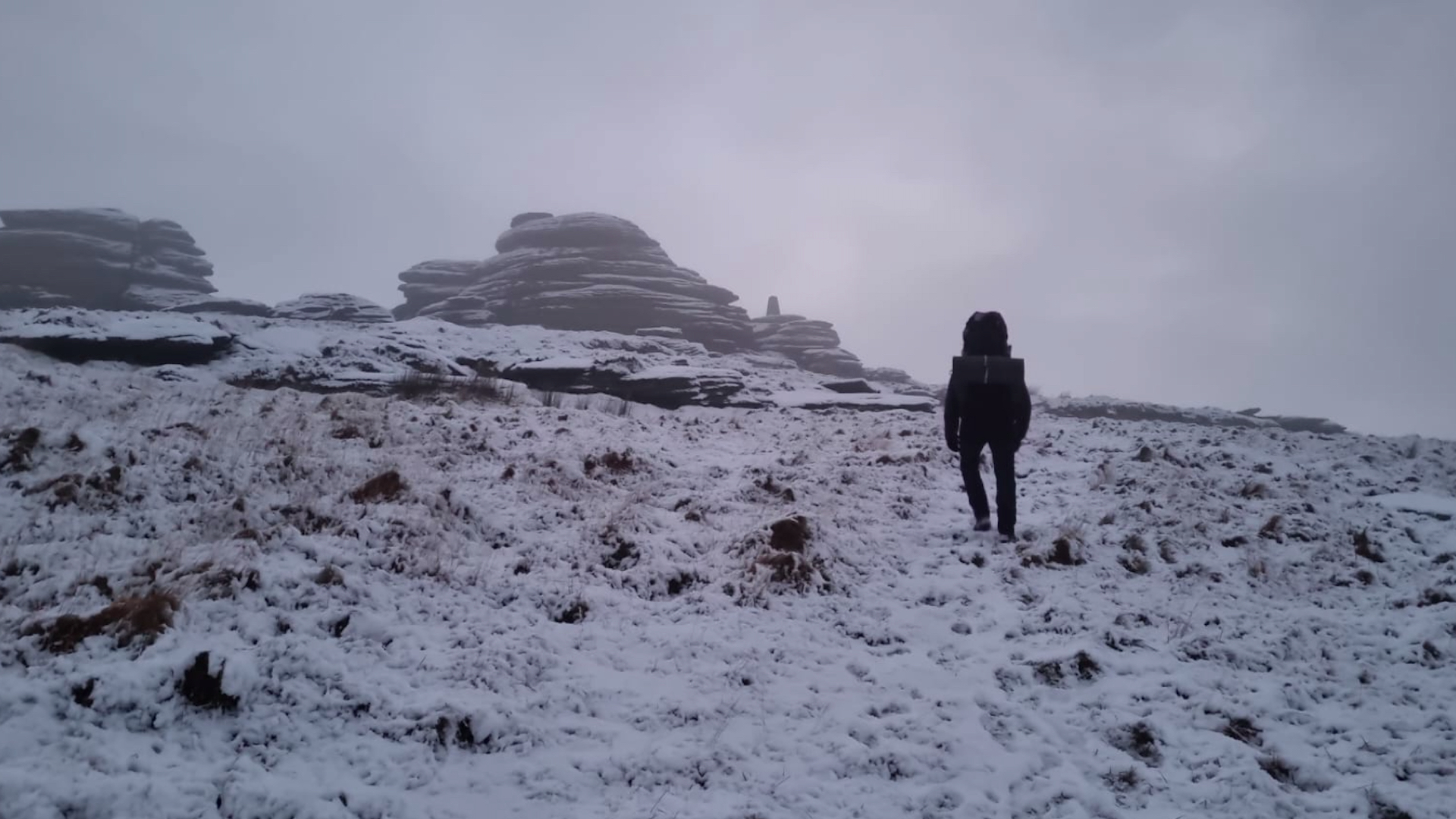
And so my photographer mate and I trudged across frozen moorland as the sun set over the undulating landscape, heading for a lump of frozen granite that’d be our home for the night. We arrived at Great Staple Tor just shy of our 4pm target, and the sun was already well below the horizon. We had about 15 minutes of usable light left, so we hurried to find a reasonable spot to toss up our tents.
For me, this meant tackling the Forclaz MT500 for the first time ever, and all with a ticking clock in the back of my mind. I’d purposely chosen not to test pitch the tent before we headed out, merely checking that there were enough pegs and guy lines. Luckily, the tent was as easy to put up as Decathlon’s product marketing department make out.
All I needed to do to get the Forclaz MT500 set up was slide two crosspoles through the marked corner sleeves and push the ends into the lugs. I then clipped the fly to a center pole that sat on the top of the tent, rounding out the shape of the structure and adding extra space inside. And that was it: the tent was up. All that was left was to peg out each corner to properly fasten the tent to the ground. It took eight pegs to peg out the body, as well as an additional four for the guy lines.

The guy lines are where the thoughtfulness that went into this tent’s design really stood out: the Forclaz MT500 comes with four short lines ready attached to the fly, each holding a small ring. The guy lines can then easily be attached to these rings via a simple latch system that removes the need to tie knots or tighten cord. As I was wearing gloves throughout this process, I was thrilled to see how seamless the process of adding guy lines to the Forclaz MT500 was; a feature I didn’t expect on a tent at this price point, and something I’d love to see on more tents in the future.
All in, it took me a total of seven minutes to fully pitch, peg and guy-out the Forclaz MT500 – all as a first-time user. I even managed to organize my sleeping space and stow my pack while there was some twilight left over the tor, right as a flurry of snow started to fall.

Climbing in the tent, the design of the Forclaz MT500 impressed me for a second time that evening: tall and wide, there was plenty of space to sit up and move about in the 2-man (though you wouldn’t want to sleep in here as a pair). And, as the tent comes with two doors, it means there are two roomy vestibules that can be used for storing all sorts of wet kit. Or you can use one as a closet and the other as a kitchen, as was my setup of choice during my night inside.
The inner also comes with two generous pockets for storing bits and bobs, and you can easily access the ventilation ports in the tent roof for easy opening and shutting as the weather demands.

How the MT500 performed through the night
By 5pm, we were fully pitched and ready for dinner. As the snow continued to fall outside, I set up a makeshift kitchen in one of the two vestibules and got to work boiling some water. Luckily, the MT500 comes with a two-way zipper on the door perfect for this sort of setup. It means you can crack open the door for some added ventilation when cooking without letting in too much wind.
As the evening went on, the wind picked up and the snow started to whirl more aggressively outside the tent door. But the little Forclaz MT500 barely budged. The fly outside was as tight as a drum skin, and it stayed strong and impressively quiet all through the night, even in the face of some nerve-wracking gusts.
Owing to the tent not having any snowskirts – it is a 3-season tent after all – quite a bit of snow did blow into the inner through the night, coming in through the gap between the fly and the ground. This never proved to be a huge issue as not a single flake made its way through the mesh inner – though in the morning, I did wake up to find my backpack buried under a small mountain of snow.
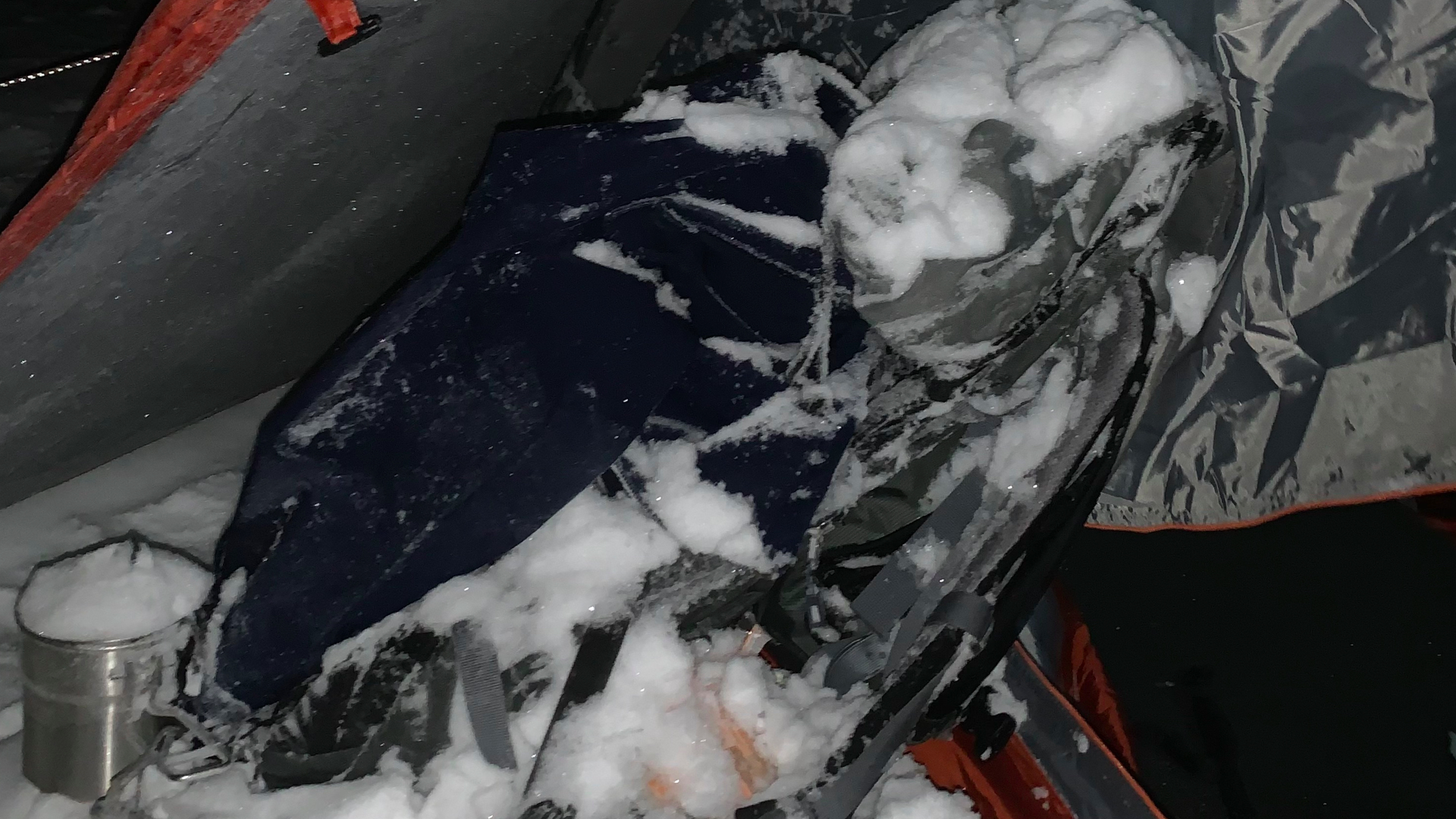
Through the night, the temperature inside the tent never warmed above -6 °C (21°F). Had I been in a proper 4-season tent with a full nylon inner, I’m confident it would have maintained substantially more warmth. But for a 3-season budget backpacking tent, it did exceptionally well, and I remained cosy and warm in my sleeping bag.
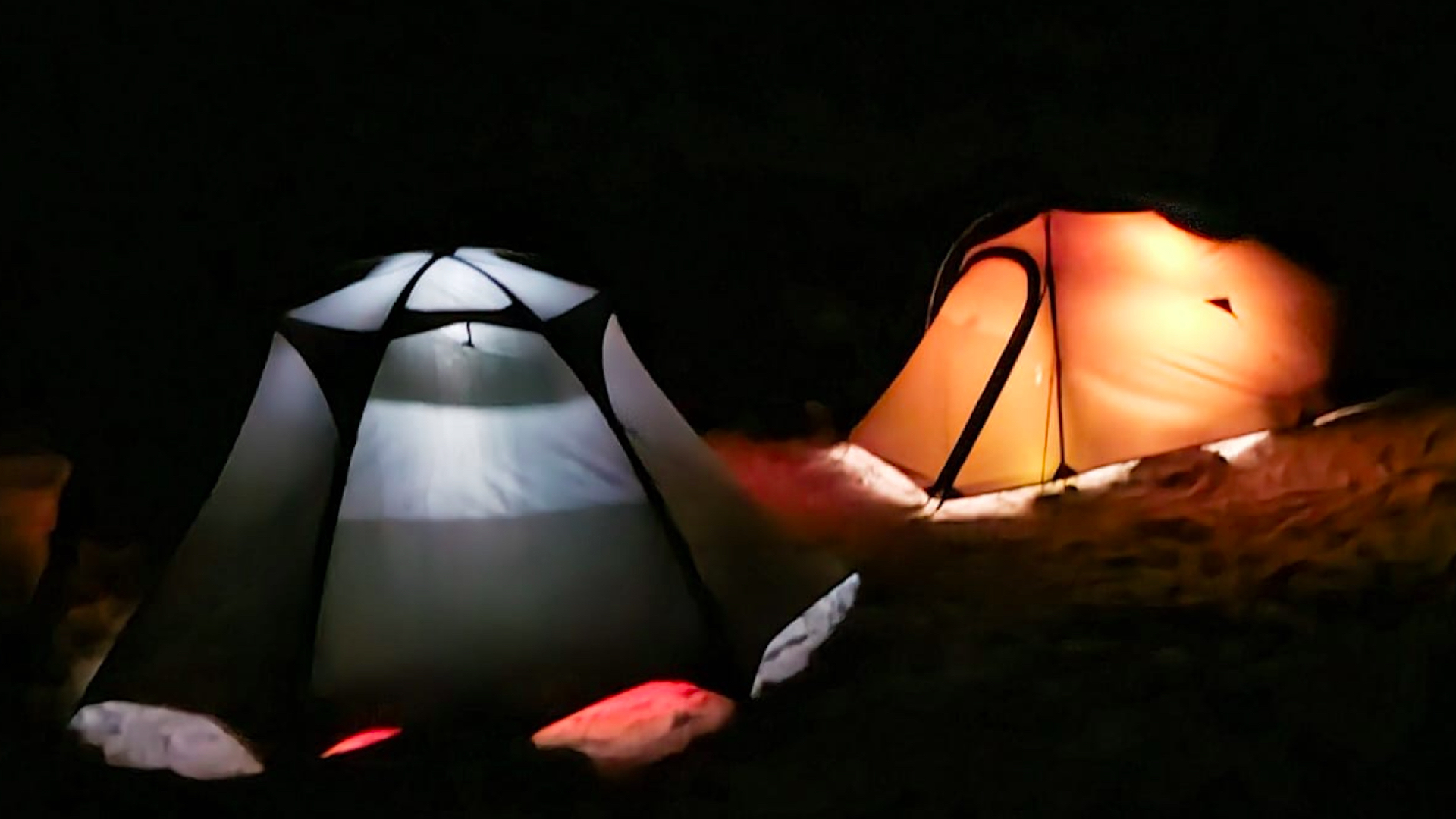
My verdict
Overall, I remain massively impressed by the Forclaz MT500. It was easy to pitch, held up well to the conditions I pitted it against, and is both lightweight and easy to pack. It performed incredibly well up on Great Links Tor, and I’d confidently use it again on pretty much any future adventure. One of the most impressive things about this shelter has to be the price, however. For £109.99, you can get a tent that ticks so many boxes, while also coming with a host of thoughtfully designed features that will tangibly improve your experience of sleeping in a tent – regardless of the weather.
In fact, I’d even go as far as saying that the Forclaz MT500 is my new favorite budget shelter, and I’d happily pitch it up against more expensive competition when it comes to price versus performance, especially considering all of the handy extra features this cracking little shelter comes with.
So, did this tent prove my theory that you can safely use a tent designed for three seasons in all four in the England and Wales? I’d argue that it did, for the majority of wild campers at least. You could quite easily use this tent 4-season, as long as you’re smart about where you pitch it and the extra kit you bring with you to keep you warm and comfortable. Naturally, I wouldn’t put this thing on top of Helvellyn in a January blizzard, nor would I want to be in it on an exposed plateau in triple digit wind speeds. But, truthfully, I wouldn’t want to be in any tent in those conditions.
- Best one-person tents: for backpacking and solo adventures
Growing up just south of the glorious Brecon Beacons National Park, Craig spent his childhood walking uphill. As he got older, the hills got bigger, and his passion for spending quality time in the great outdoors only grew - falling in love with wild camping, long-distance hiking, bikepacking and fastpacking. Having recently returned to the UK after almost a decade in Germany, he now focuses on regular micro-adventures in nearby Snowdonia and the Brecon Beacons, as well as frequent trips to the Alps and beyond. You can follow his adventures over on komoot.


